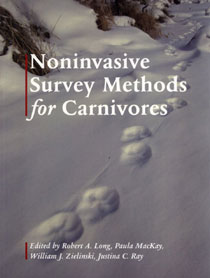"The book will be useful to anyone interested in the study of carnivores, including scientists engaged in primary research, as well as agencies and organizations requiring carnivore detection data to develop management or conservation plans."
Reference & Research Book News
"For such a technical publication, the language is refreshingly free of jargon and technical terms. Highly recommended."
Choice
"The bulk of the volume and the detailed explanation of both the theoretical underpinnings as well as practical field considerations in the use of the techniques will be much appreciated by researchers who consider using these methods."
Book Reviews
"This collection is a comprehensive guide for wildlife researchers, who seek to conduct carnivore surveys using the most recent scientific approaches."
Abstracts of Public Administration, Development, and Environment

